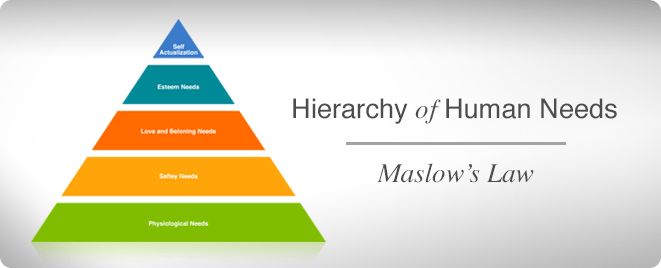Brands with cult-like followings: Elite. Powerful. Significant.
Which of your favorite brands come to mind? Perhaps Apple, Harley Davidson, Nike, Coca-Cola, NASCAR, Chick-fil-A, Volkswagen, or Vans.
Want to know how to build that kind of brand?
You must build a culture that is worthy to be followed by your staff and your customers.
How is this done? First, you’ve got to face the plain truth when it comes to branding for significance: revenue is not the purpose but the result of building this kind of company. The purpose must be much deeper than the bottom line.
When you are inclined to build a meaningful relationship with someone, do you base it off of a monetary value, or is it because of common interests and principles? Why would the Brand to Human® relationship be any different?
– Ron Netanel, Founder of IDealogic® Brand Lab
In business, the end result is all about the economics. But if you only focus on the economics, the result you end up with is all about singular transactions (or two). Inevitably, if the consumer hasn’t adopted your product or service into their lifestyle, you’ve shortened your customer lifecycle and limited your business. Most business models that I’ve seen like this tend to offset poor customer retention by constantly trying to attract new customers. Although new customers are essential to business growth, keeping those customers is the key to business stability.
Brands with cult-like followings focus on bringing together a community of loyal employees and consumers. Working hard to foster a strong sense of culture is the only way to build a community of acceptance, support, and loyalty; but as a result, these companies enjoy an incredible amount of business growth and stability.
The retention of your customers lies within the experience you deliver. That experience must nurture and appeal to the HUMAN…
…not the transaction.– Ron Netanel, Founder of IDealogic® Brand Lab
The definition of culture is a “set of shared attitudes, values, goals, and practices that characterize an institution or organization.” So brand culture is a set of shared attitudes, values, goals, and practices that characterize a brand.
In 1943, Abraham Maslow wrote an article for the Psychological Review entitled A Theory of Human Motivation, in which he introduced the idea of a hierarchy of human needs. This idea became known as Maslow’s Law.

It states that first and foremost, humans have a set of physiological needs that must be met like breathing, drinking, eating, and sleeping. These are the primal necessities of all living creatures.
The second need, safety, is where humans begin to diverge from the rest of the animal kingdom. We need security of employment, of resources, of morality, of property, of our body, of our family, and of our health.
The third need is to belong. As people, it is absolutely essential for us to build relationships, or bonds, with one another. We need to feel like we are a part of something bigger than ourselves.
The first two needs of Maslow’s hierarchy, physiological and safety, are what keep us alive; but the last three needs, belonging, esteem, and self-actualization, are what give us the reason to live.
Communities, and the unique collection of manifestations they’re composed of, create culture. According to Maslow, we need a sense of community—a sense of culture—before we can even begin to ascertain a sense of self. In other words, to understand who we are, we must first understand where we belong.
This is human nature.
True culture is the result fostered by the lifestyle of a community focused on a single, common goal – connecting us by multiple common bonds. It can be the “sole soul” that guides.
Let’s compare apples to apples (literally)—one red and the other green. One is sweet; one is sour. Though they have differentiators, they are both apples. The same is true about people. We have differentiators too, yet we are all people.
It is people who create culture—an idea that simply wouldn’t exist without people and their ideologies. And by delving into culture as it applies to a population’s geographical location, we can unlock what creates the commonalities that bond it. Below is a list of elements that contribute to a society’s culture:
- Ideology
- Religion
- Traditions
- Education
- Values and Beliefs
- Hierarchy of classes and those lifestyles
- Social Interests, Objectives, and Views
- Language, Speech Patterns and Dialects
- Architecture
- Food
- Clothing
- Iconic Symbols
- Folklore
- Holidays
- Recreational & Leisure Activities
- Group Gatherings
- Commodity & Trade
- Entertainment and the Arts
- Sports
Each of these attributes builds bonds with the “intangible,” all of which are taught and together define a community’s “being.” These ideologies, teachings, and rights of passage produce profound bonds with the populace. The more frequently the people of a population engage with these cultural attributes, the more emotionally attached and loyal they become.
Amongst every society’s people, there is a shared combination of these bonding cultural attributes (with some people sharing more than others). More importantly, each attribute reinforces a unified community and fosters a pride in being part of the whole. These shared commonalities ensure a strong community of support and camaraderie and also serve to differentiate and segregate one culture from another.
Now consider each one of those attributes as a connection point for the bond. The more connection points you teach, promote, instill, embed, and cultivate, the stronger and more sacred that community’s cultural value becomes, and the more diligently its people are in upholding and enforcing it.
Those societies most faithful to their heritage, living in accordance to their ideals, philosophies, and traditions, are the societies that share the greatest unity and whose cultures remain highly relevant. It’s easy to see that an increase of various nationalities within a country leads to a blend of societies and cultures, and all of those people must learn to adapt and change. As the very nature of culture causes exclusion to outsiders (unless they are willing to follow it as it was “written”), this generally results in conflict. As history proves, cultural changes can lead to great division (people experience a sense of their culture being overtaken). Division promotes disloyalty, inevitably leading to an uprising amongst societies trying to coexist. And as resolution occurs, important cultural issues such as laws and beliefs tend to become equalized over time and the more diluted the “original” core culture becomes.
Now that we’ve established the definition of culture and its power within society, my next segment will cover culture and its parallel role within an organization.




[…] my previous segment, I defined culture and used a broad look to discuss culture’s role in defining a country. This […]